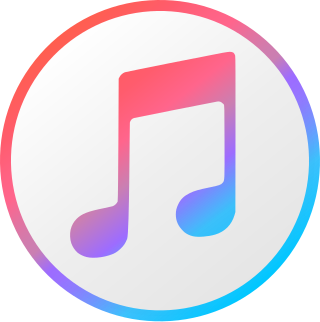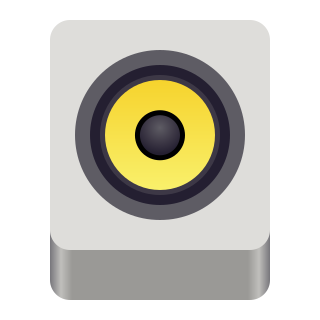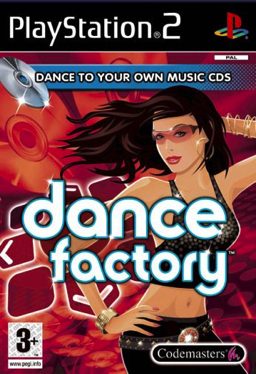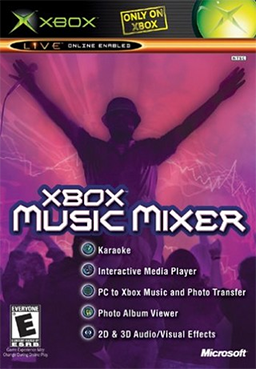
Compact Disc Digital Audio, also known as Digital Audio Compact Disc or simply as Audio CD, is the standard format for audio compact discs. The standard is defined in the Red Book technical specifications, which is why the format is also dubbed "Redbook audio" in some contexts. CDDA utilizes pulse-code modulation (PCM) and uses a 44,100 Hz sampling frequency and 16-bit resolution, and was originally specified to store up to 74 minutes of stereo audio per disc.

Video CD is a home video format and the first format for distributing films on standard 120 mm (4.7 in) optical discs. The format was widely adopted in Southeast Asia, South Asia, East Asia, Central Asia and West Asia, superseding the VHS and Betamax systems in the regions until DVD-Video finally became affordable in the first decade of the 21st century.

Windows Media Player is the first media player and media library application that Microsoft developed to play audio and video on personal computers. It has been a component of the Microsoft Windows operating system, including Windows 9x, Windows NT, Pocket PC, and Windows Mobile. Microsoft also released editions of Windows Media Player for classic Mac OS, Mac OS X, and Solaris, but has since discontinued them.

MiniDisc (MD) is an erasable magneto-optical disc-based data storage format offering a capacity of 60, 74, and later, 80 minutes of digitized audio.

Media player software is a type of application software for playing multimedia computer files like audio and video files. Media players commonly display standard media control icons known from physical devices such as tape recorders and CD players, such as play, pause, fastforward (⏩️), rewind (⏪), and stop buttons. In addition, they generally have progress bars, which are sliders to locate the current position in the duration of the media file.

iTunes is a media player, media library, and mobile device management utility developed by Apple. It is used to purchase, play, download and organize digital multimedia on personal computers running the macOS and Windows operating systems, and can be used to rip songs from CDs as well as playing content from dynamic, smart playlists. It includes options for sound optimization and wirelessly sharing iTunes libraries.

A playlist is a list of video or audio files that can be played back on a media player, either sequentially or in a shuffled order. In its most general form, an audio playlist is simply a list of songs that can be played once or in a loop. The term has several specialized meanings in the realms of television broadcasting, radio broadcasting and personal computers.
Ripping is the extraction of digital content from a container, such as a CD, onto a new digital location. Originally, the term meant to rip music from Commodore 64 games. Later, the term was applied to ripping WAV or MP3 files from digital audio CDs, and after that to the extraction of contents from any storage media, including DVD and Blu-ray discs, as well as the extraction of video game sprites.

Rhythmbox is a free and open-source audio player software, tag editor and music organizer for digital audio files on Linux and Unix-like systems.

The iPod Shuffle is a discontinued digital audio player designed and formerly marketed by Apple Inc. It was the smallest model in Apple's iPod family, and was the first iPod to use flash memory. The first model was announced at the Macworld Conference & Expo on January 11, 2005; the fourth- and final-generation models were introduced on September 1, 2010. The iPod Shuffle was discontinued by Apple on July 27, 2017.

Rockbox is a free and open-source software replacement for the OEM firmware in various forms of digital audio players (DAPs) with an original kernel. It offers an alternative to the player's operating system, in many cases without removing the original firmware, which provides a plug-in architecture for adding various enhancements and functions. Enhancements include personal digital assistant (PDA) functions, applications, utilities, and games. Rockbox can also retrofit video playback functions on players first released in mid-2000. Rockbox includes a voice-driven user-interface suitable for operation by visually impaired users.

A portable media player (PMP) or digital audio player (DAP) is a portable consumer electronics device capable of storing and playing digital media such as audio, images, and video files. The data is typically stored on a compact disc (CD), Digital Versatile Disc (DVD), Blu-ray Disc (BD), flash memory, microdrive, SD cards or hard disk drive; most earlier PMPs used physical media, but modern players mostly use flash memory. In contrast, analogue portable audio players play music from non-digital media that use analogue media, such as cassette tapes or vinyl records.

MediaMax, sometimes referred to as MediaMax CD-3 is a software package created by SunnComm which was sold as a form of copy protection for compact discs. It was used by the record label RCA Records/BMG, and targets both Microsoft Windows and Mac OS X. Elected officials and computer security experts regard the software as a form of malware since its purpose is to intercept and inhibit normal computer operation without the user's authorization. MediaMax received media attention in late 2005 in fallout from the Sony XCP copy protection scandal.
Gapless playback is the uninterrupted playback of consecutive audio tracks, such that relative time distances in the original audio source are preserved over track boundaries on playback. For this to be useful, other artifacts at track boundaries should not be severed either. Gapless playback is common with compact discs, gramophone records, or tapes, but is not always available with other formats that employ compressed digital audio. The absence of gapless playback is a source of annoyance to listeners of music where tracks are meant to segue into each other, such as some classical music, progressive rock, concept albums, electronic music, and live recordings with audience noise between tracks.

Mini CDs, or pocket CDs, are CDs with a smaller diameter and one-third the storage capacity of a standard 120 mm disc.
CD/DVD copy protection is a blanket term for various methods of copy protection for CDs and DVDs. Such methods include DRM, CD-checks, Dummy Files, illegal tables of contents, over-sizing or over-burning the CD, physical errors and bad sectors. Many protection schemes rely on breaking compliance with CD and DVD standards, leading to playback problems on some devices.

Dance Factory is a PlayStation 2 game developed by Broadsword Interactive and published by Codemasters. It has been compared with Dance Dance Revolution, but unlike the Dance Dance Revolution series Dance Factory can generate dance moves from any music CD. It can be played with any PlayStation controller and allows input from the EyeToy camera, but the majority of gameplay is done with a foot-operated Dance pad and is available with or without a pad in the package.

The Xbox Music Mixer is a multimedia utility developed by WildTangent and published by Microsoft Game Studios for the Xbox in 2003. The software allows the user to transfer certain types of music and pictures directly from a PC to the Xbox, create custom soundtracks, and features a karaoke mode to sing pre-loaded or custom songs using a packaged karaoke microphone. Xbox Music Mixer was announced at E3 in 2003 as part of a 'Digital Entertainment Lifestyle' initiative, with expectations that the software would lead the console towards functionality as an all-in-one media centre. Upon release, the software received negative reception, with reviewers observing compatibility and usability issues and limitations to the game's karaoke features. The software was subsequently influential to the features of the similar Windows Media Center Extender for the Xbox 360.

A CD-ROM is a type of read-only memory consisting of a pre-pressed optical compact disc that contains data computers can read, but not write or erase. Some CDs, called enhanced CDs, hold both computer data and audio with the latter capable of being played on a CD player, while data is only usable on a computer.

MusicBee is a freeware media player for playback and organization of audio files on Microsoft Windows, built using the BASS audio library.















